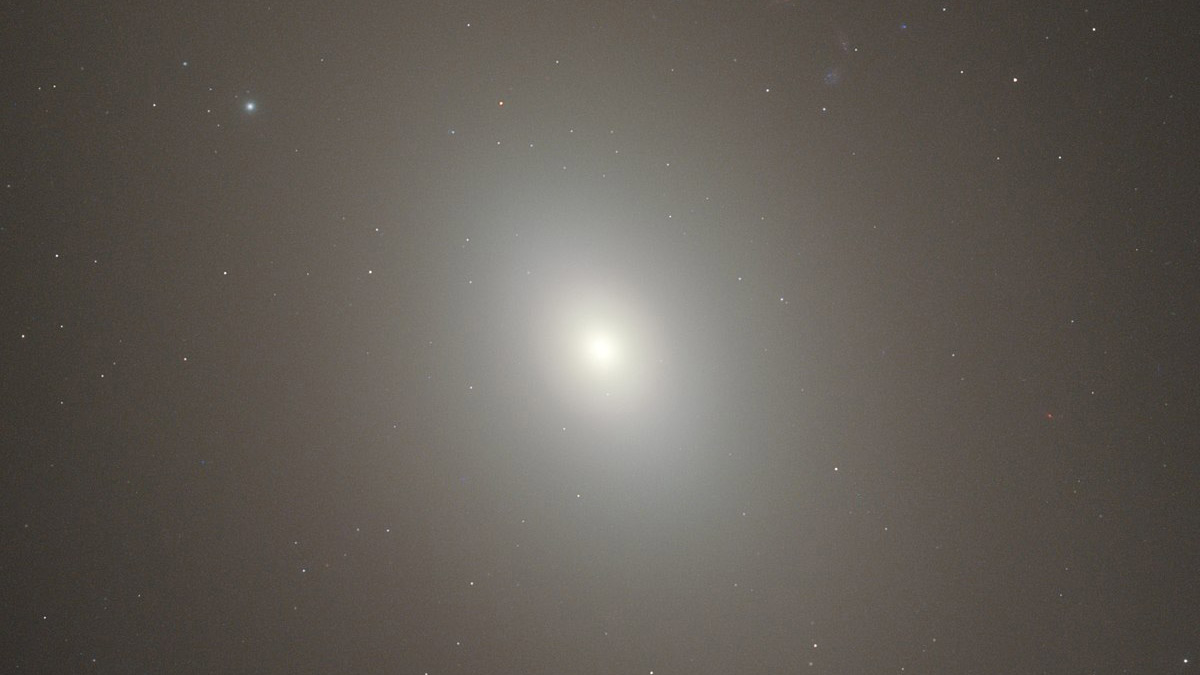As with many galaxies, M85 is a difficult object to view from light-polluted suburbs. It usually takes some patience and averted vision on behalf of the suburban amateur astronomer to find these objects. Still, when a galaxy enters an eyepiece (usually looking like a wisp of smoke), it’s a great experience knowing the light is from millions of light years away from a massive galaxy.
Messier 85 happens to be one of the brightest galaxies among the Como-Virgo cluster and is best viewed in May. So if you are a backyard astronomer fighting light pollution, be sure to give this object a try.
M85 has properties between an elliptical and lenticular galaxy, which means it has a large disc (like a spiral galaxy) but doesn’t have spiral arms (like the spiral arms in our Milky Way). It’s even more intriguing as most believe it’s a merger of two galaxies. And in recent history, two supernovas have been witnessed in the galaxy: one in 1960 and the other in 2020. 1
Pierre Mechain first recorded M85 in 1781—see his comments near the bottom of this page.
My Observations
| Date | May 21, 2022 |
| Time | 10:38 p.m. |
| Location | Seattle, WA |
| Magnification | 127x |
| Scope | Meade 8″ SCT |
| Eyepiece | 16mm |
| Seeing | Above Average |
| Transparency | Average |

M85 is a wisp of smoke in my eyepiece. At first, I wasn’t sure I was looking at it. However, as I moved the telescope left and right slowly, I could tell the little cloud was moving. Also, I noticed in photographs a brighter star in the visual field. As an additional check, my wife happened to come out for a few minutes and join me. She confirmed, for my aging eyes, that the little cloud wasn’t simply a smear on the lens.
Key Stats
| Constellation | Coma Berenices |
| Best Viewing | Spring |
| Visual Magnitude | +9.0 |
| Absolute Magnitude | -22.2 |
| Distance from Earth | 58 million yrs |
| Diameter | 116000 ly |
| Apparent Size | 7.0 x 5.3 arcmin |
| Milky Way Location | NA |
| My Viewing Grade | C+ |
| Designations | NGC 4382, PGC 40515, ISD 0135852 |
Historical Observations
M85 was discovered by Pierre Méchain on March 4, 1781. Weeks later, his colleague Charles Messier recorded the following passage on March 18, 1781.
“Nebula without star, above & near to the ear of the Virgin [Virgo], between the two stars in Coma Berenices, No.s 11 & 14 of the Catalog of Flamsteed: this nebula is very faint. M. Méchain had determined its position on March 4, 1781.” 2
Years later on March 23, 1827, John Herschel recorded M85:
“Very bright; round; brighter toward the middle; 2′ diameter; has a star at position angle 80deg north preceding [NW] at distance 30″ from the edge.” 2
Sources and Notes
Banner photo of M85: Produced by ESA/HUBBLE and is licensed under the Creative Commons Attribution 4.0 International license. Details here.
1 Information@eso.org. (n.d.). The darkness within? http://www.spacetelescope.org. Retrieved May 23, 2022, from https://esahubble.org/images/potw1905a/
2 Guy McArthur, H. F. (n.d.). Messier 85. Retrieved May 22, 2022, from http://www.messier.seds.org/Mdes/dm085.html
Sketch by Wayne McGraw

One thought on “Messier 85 (NGC 4382): An Intriguing Haze in a Cluster of Galaxies”